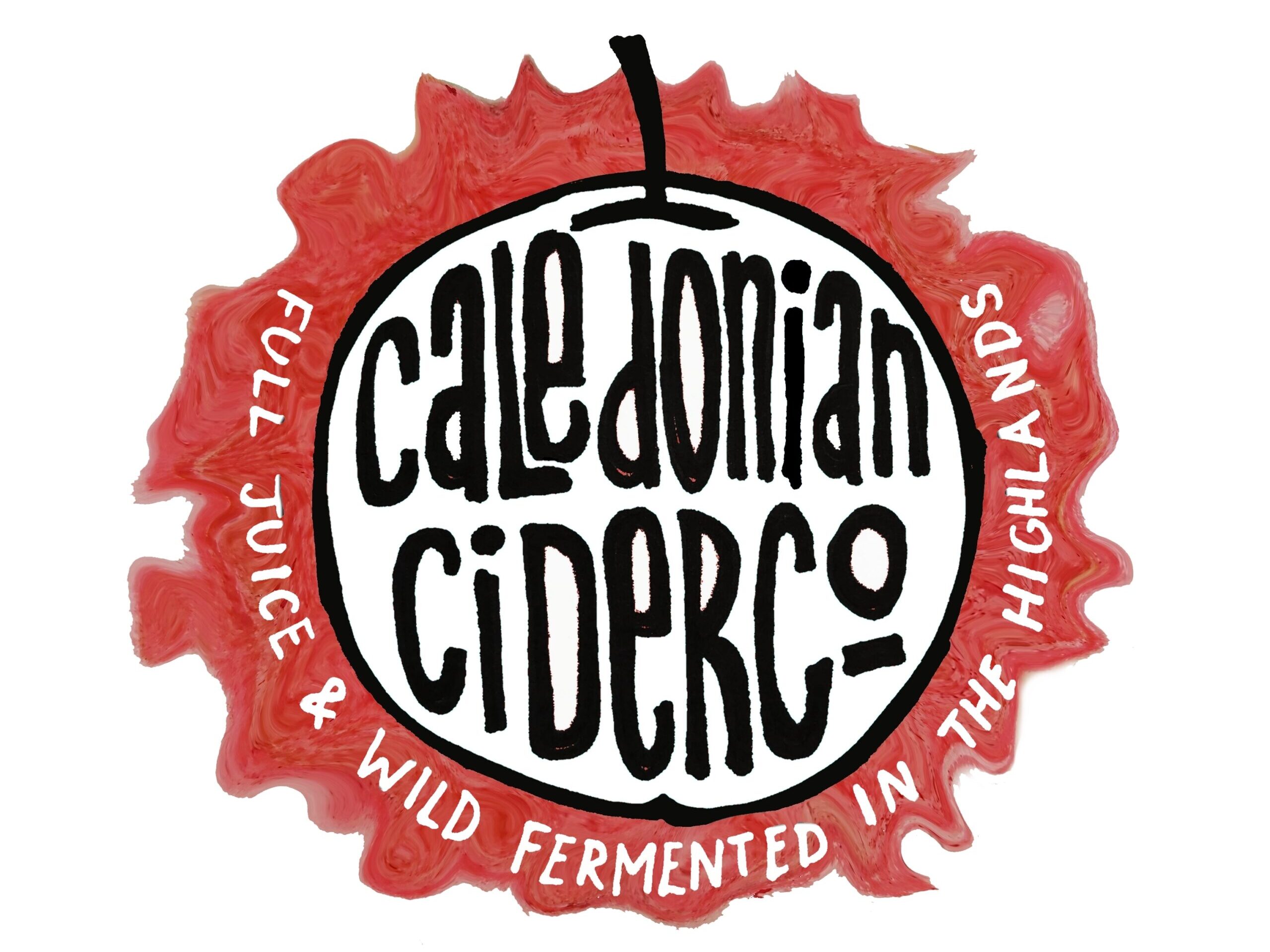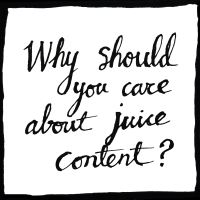If you spend any amount of time around cider people then sooner or later you’re bound to hear the term “Full Juice”, but what do we mean by it and why do some people seem to think it’s important?
Here’s a couple of opening statements.
- A book is made from paper bound together with or without writing in it.
- Cider is made from apple juice.
So the “ingredients” of a book are paper and possibly writing. If I go to the shop and get some paper and bind it together then I’ve made a book. Although with cider if I go to the shop and buy some apple juice I won’t have made cider. This is because apple juice isn’t really an ingredient of cider, it gets transformed by fermentation into cider. So a more accurate way of saying the above would be cider is fermented apple juice (Not made from, not made with…just IS).
So if fermented apple juice is cider then that must mean that cider is fermented apple juice, right?
Well, despite the sound logic of that question the answer is actually, not always. And this is where the term Full Juice comes in. Full juice is generally used to describe a cider which is made solely by the fermentation of apple juice. As discussed in this previous post the UK has legislation which states that cider must be made from a minimum of 35% fermented apple juice (If you’re wondering what the other 65% could be then the answer is mostly water).
Cidermakers will often talk about juice content to differentiate their ciders from the 35% juice ones (the 35% juice guys tend not to talk about juice content so much). You’ll often see it displayed proudly on labels or referenced in tasting notes, the UK’s first craft cider magazine has even called itself Full Juice perhaps as a nod to what separates the craft from the crap.

Cider drinkers though tend to talk about juice content because they’re looking for quality, provenance and value for money. The point about value for money is actually quite an interesting one because to some at first glance it may seem counter intuitive. Obviously apple juice is more expensive than water, so let’s say your national brand of cider costs £2 per 500ml bottle while your full juice cider is on the shelf for £3.50, on the face of it your national brand is offering better value but, given that 65% of that bottle is actually water is it genuinely good value? If we adjust that price to take into account the actual cider (since realistically who wants to pay for water in their cider) then the “cheap” national brand comes out at £5.71 per 500ml of cider (as opposed to water and cider) compared to your full juice alternative at £3.50…in short cheap ciders are cheap because they’re watered down. I’m not saying that’s necessarily a bad thing and if you enjoy drinking it then hey what’s the difference? But to think they’re good value is simply not true. To put it another way, if you buy 24 cans of seemingly cheap cider then the equivalent of 15.6 of them are pretty much just water, very expensive water…
So as a cider drinker how are you expected to know the difference between something which is 65% water and something which is, well, cider? One easy way is probably just to get used to the taste, here’s an easy experiment to try at home.
- Fill one glass with apple juice (any apple juice will do for this) then fill the other to about 1/3 of the way up
- Top up the 2nd glass with water
- Taste them
You’ll probably notice that glass two is paler, tastes less sweet and will in general taste thinner or more watery. If you want you could add 4 or 5 teaspoons of sugar to number 2, this should adjust the sweetness to match glass 1 but it will still have less taste be watery and feel thinner. Which of the two glasses would you rather drink? And what if instead of the dilution happening behind closed doors in a factory it happened on the bar right in front of you?
Customer “How much for a pint of cider?”
Landlord “that’ll be £4”
Customer “Hmm, seems a bit steep!”
Landlord “OK, I can give you a third for £2 and top it up with water if you want?”
Customer “Bargain!”
I suspect if given the choice most people would choose not to have their cider diluted with water to dubiously appear as good value. Unless of course they’re not that bothered about the taste and just want something cheap, alcoholic and preferably sweet regardless of what it calls itself, some folk just want a weak vodka and lemonade but don’t know how to make it.
When I think of foods with a range of quality probably the first one that pops into my mind is the humble sausage. We all know that some sausages are better than others and that the cheaper the sausage in general the lower the meat content. On the supermarket shelf it’s easy to see this, the ingredients are all printed on the packs and you can make an informed choice (if you wish) of which pack you want, weighing up quality and cost in your head and probably coming up with a suitable compromise between the two. Sausages however, are more open to scrutiny than cider, for one thing they list their ingredients and secondly in most cases they are priced accordingly. One of the interesting things about the supermarket cider shelf is how uniform all the pricing is, there’s the own label stuff at the cheap end then there’s everything else. Here are some of the 500ml bottled ciders and their prices as listed by Tesco in July 2020.
- Thatchers Katy £2
- Kopparberg Strawberry & Lime £2.20
- Healey’s Rattler £2
- Thatchers Vintage £2
- Henry Westons Vintage £2
- Rekorderlig Strawberry & Lime £2.20
- Aspall Premier Cru £2
- Brothers Toffee Apple £2
- Old Mout Kiwi & Lime £2.20
- Angry Orchard £2
- Angioletti Cider £2
- Magners £2
- Bulmers Original £2
- Bulmers Red Berries £2
- Crumpton Oaks* £0.85
I could go on longer but what do you notice about this list apart from the fact that Lime seems to cost 20p? There’s no middle ground is there? And that seems weird to me, it’s as if there’s no middle shelf, there’s just one massive extended top shelf and then a bottom shelf. Either this supermarket only deals in genuinely premium cider or some of these guys are telling fibs. Next time you’re in the supermarket have a browse of the prices in the cider section then compare them to the range of prices for beer or wine. In the beer section I’ve got Bavaria Premium at £2/ltr, Ghost Ship at £3.4/ltr and Punk IPA at £4.55/ltr. Beer has a middle shelf, cider doesn’t.

As hinted at earlier on, advertising the fact that your product contains only 35% of what it pertains to be on the label is not a good look and because of this it can be difficult to tell what you’re buying from the label alone. Obviously if a bottle of cider proudly proclaims itself to be full juice or 100% juice or some other similar thing then it’s a safe bet that it genuinely will be due to trading standards and all that. There’s also the Small Independent Cidermakers Association (SICA) which has a quality mark that can be displayed on ciders verified to be made from at least 90% juice, it’s a small group but as far as I know they are the only one with a verified quality mark. You’re unlikely to find any of these ciders at the supermarket just now but definitely worth keeping a look out at your local farm shop, independent off license or specialist online retailer.
These posts always end up being longer that I originally intended so as a way of finishing this post off I’d like to point out that of all the ciders in that list only Bulmers** include an ingredients list on their label, you’d be forgiven for wondering why that might be.
Cheers all and happy cider hunting!
Ryan.
*Just as an aside the cheapest cider available in a glass bottle, Crumpton Oaks which describes itself as “Mighty taste, expertly blended, mighty refreshing” won a silver medal at the World Cider Awards 2019 and at just 85p a bottle why not buy some and see if you agree with the judges, i’m sure they’d love to hear your thoughts.
**Apple juice from concentrate (66%)***, water, glucose syrup, preservative (Sodium Metabisulphite)
***Apple juice from concentrate is itself mostly water and the ingredients have been arranged in this way specifically to avoid having water at the top of the list, I think we could all guess where on the juice content scale this one would sit.

